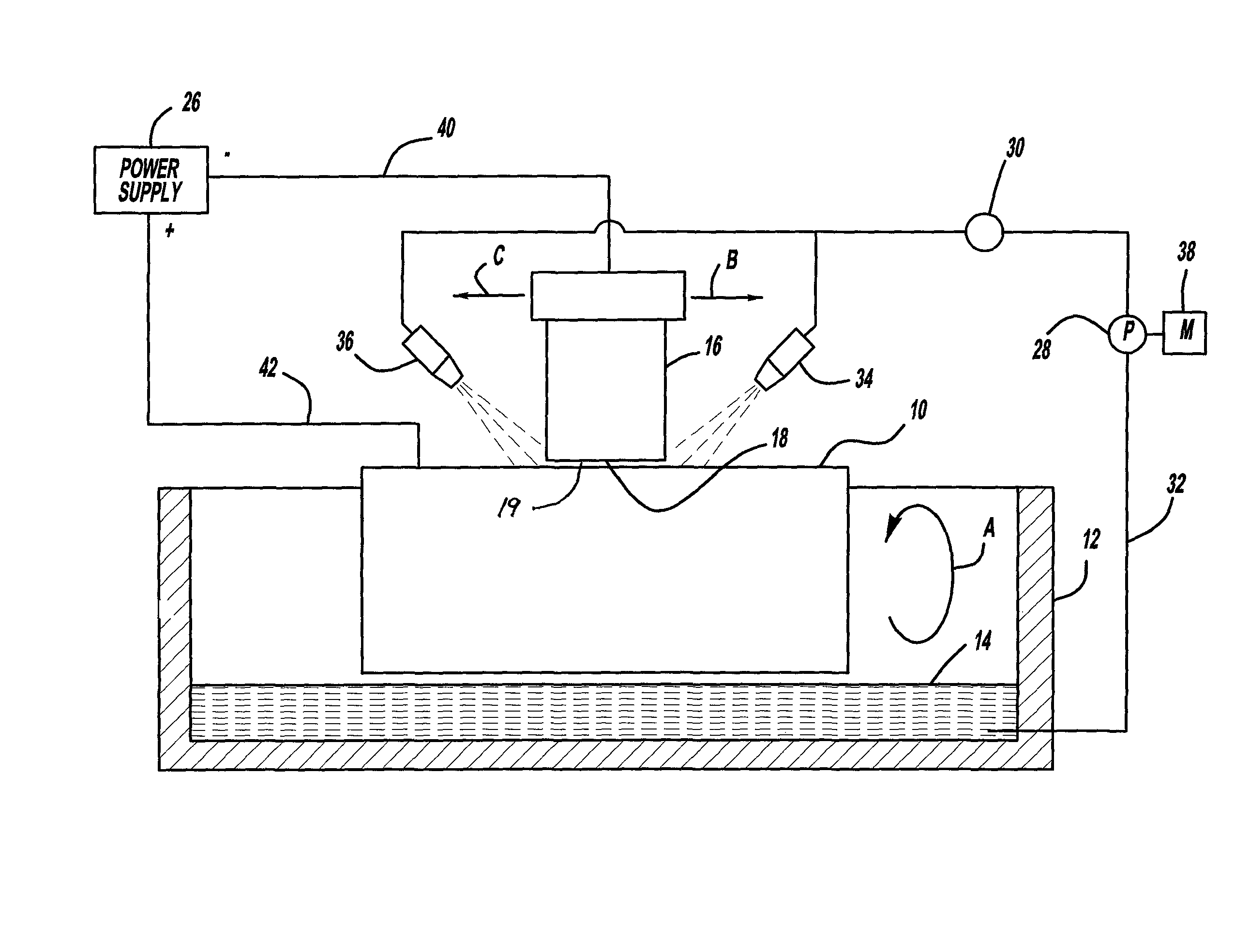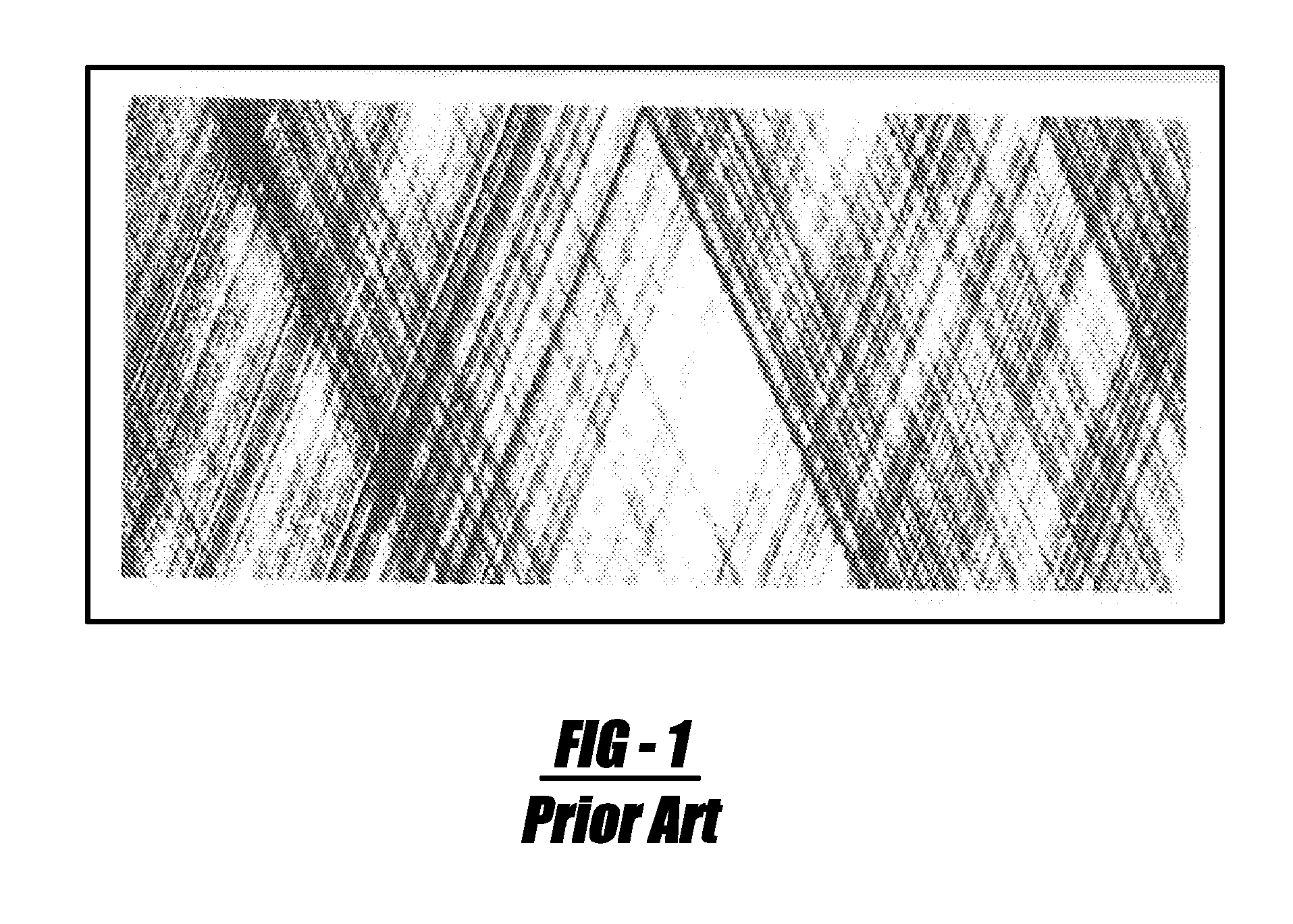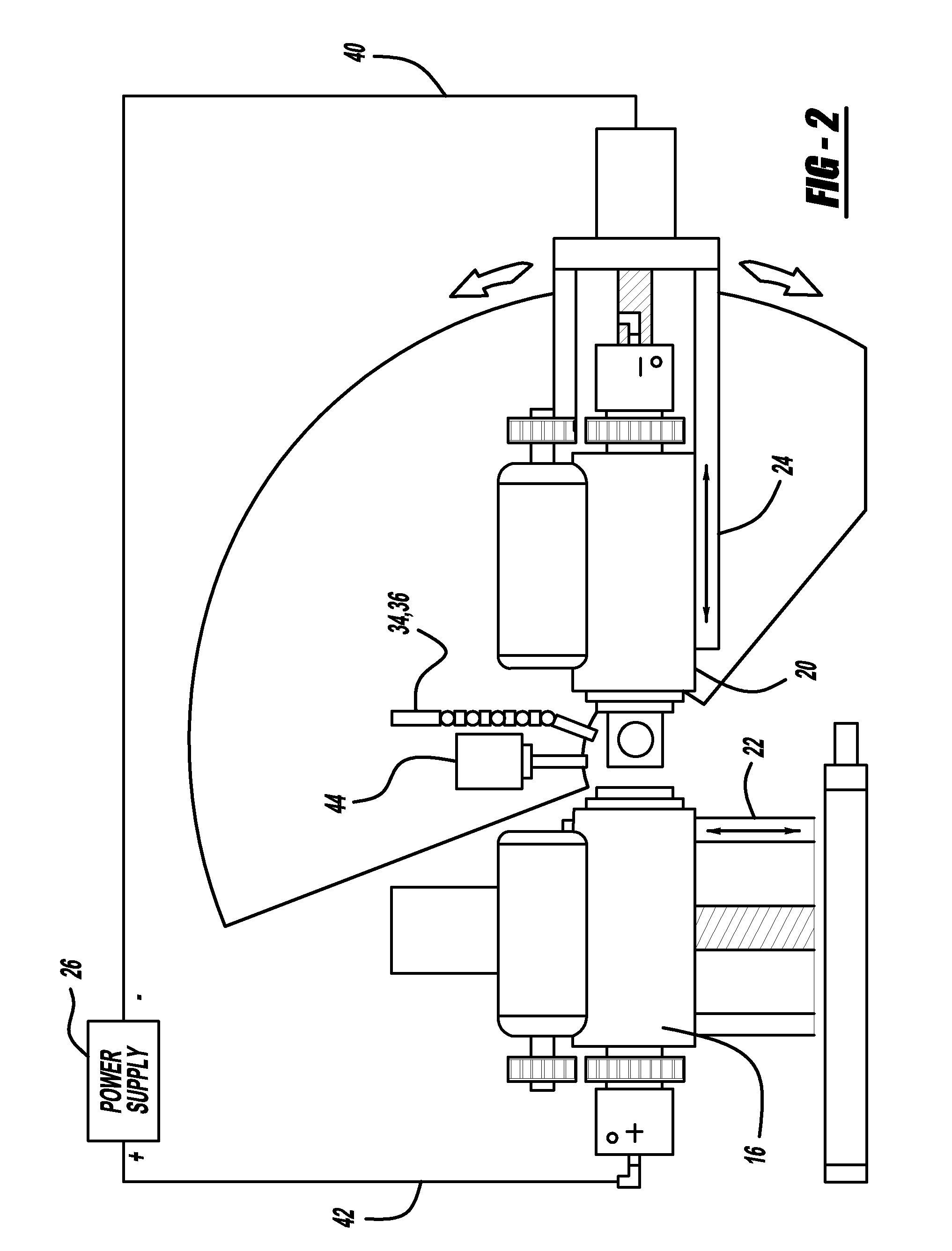Electrolytic microfinishing of metallic workpieces
a technology of electrolytic microfinishing and workpieces, which is applied in the direction of manufacturing tools, electric circuits, electric circuits, etc., can solve the problems of poor microfinishing effect, low microfinishing efficiency, and inability to achieve the effect of microfinishing, reducing the cost of the microfinishing process, and significantly reducing the overall cycle tim
- Summary
- Abstract
- Description
- Claims
- Application Information
AI Technical Summary
Benefits of technology
Problems solved by technology
Method used
Image
Examples
Embodiment Construction
[0039]The following detailed description discloses a microfinishing process. The use of the term microfinishing is intended to include what is sometimes referred to as superfinishing, mirror finishing, lapping, honing, fine grinding or just plain finishing. In fact, microfinishing is used to describe any machining process which results in superlative surface smoothness characteristics.
[0040]With reference to FIGS. 2-8a, a metallic or conductive workpiece 10 to be provided with a microfinished outer surface or at least a portion of a microfinished outer surface is positioned within the housing 12 that contains an electrolytic solution 14. The workpiece 10 is mounted on a work spindle 16 which has been built to ensure the possibility of delivering current with the highest precision. Accordingly, a work spindle 16 is utilized to eliminate earlier prior art serious limitations on their ability to consistently deliver current, given the mechanical constraints due to the high speed rotati...
PUM
| Property | Measurement | Unit |
|---|---|---|
| current density | aaaaa | aaaaa |
| current density | aaaaa | aaaaa |
| voltage | aaaaa | aaaaa |
Abstract
Description
Claims
Application Information
 Login to View More
Login to View More - R&D
- Intellectual Property
- Life Sciences
- Materials
- Tech Scout
- Unparalleled Data Quality
- Higher Quality Content
- 60% Fewer Hallucinations
Browse by: Latest US Patents, China's latest patents, Technical Efficacy Thesaurus, Application Domain, Technology Topic, Popular Technical Reports.
© 2025 PatSnap. All rights reserved.Legal|Privacy policy|Modern Slavery Act Transparency Statement|Sitemap|About US| Contact US: help@patsnap.com



